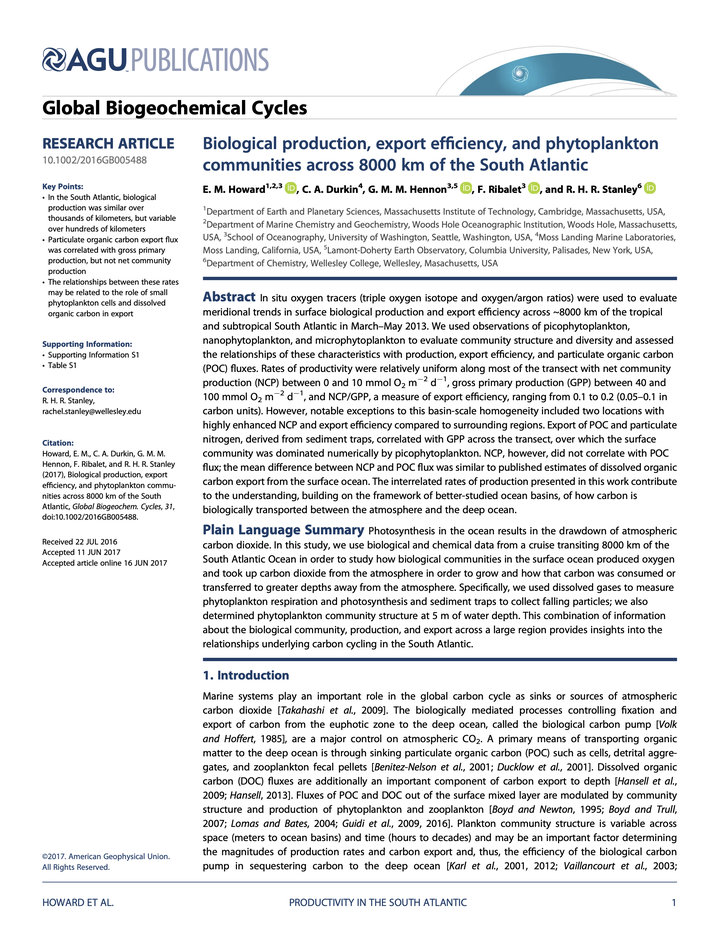Biological production, export efficiency, and phytoplankton communities across 8000 km of the South Atlantic

Abstract
In situ oxygen tracers (triple oxygen isotope and oxygen/argon ratios) were used to evaluate meridional trends in surface biological production and export efficiency across ̃8000 km of the tropical and subtropical South Atlantic in March–May 2013. We used observations of picophytoplankton, nanophytoplankton, and microphytoplankton to evaluate community structure and diversity and assessed the relationships of these characteristics with production, export efficiency, and particulate organic carbon (POC) fluxes. Rates of productivity were relatively uniform along most of the transect with net community production (NCP) between 0 and 10 mmol O2 m−2 d−1, gross primary production (GPP) between 40 and 100 mmol O2 m−2 d−1, and NCP/GPP, a measure of export efficiency, ranging from 0.1 to 0.2 (0.05–0.1 in carbon units). However, notable exceptions to this basin-scale homogeneity included two locations with highly enhanced NCP and export efficiency compared to surrounding regions. Export of POC and particulate nitrogen, derived from sediment traps, correlated with GPP across the transect, over which the surface community was dominated numerically by picophytoplankton. NCP, however, did not correlate with POC flux; the mean difference between NCP and POC flux was similar to published estimates of dissolved organic carbon export from the surface ocean. The interrelated rates of production presented in this work contribute to the understanding, building on the framework of better-studied ocean basins, of how carbon is biologically transported between the atmosphere and the deep ocean.